Mon, 16 Mar 2015 . Last updated Thu, 25 Jun 2015 09:02
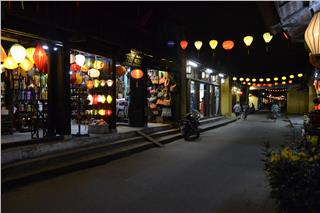


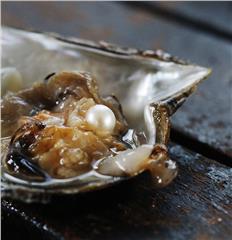
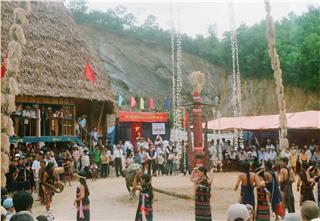
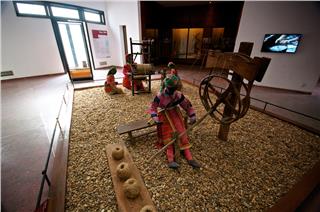

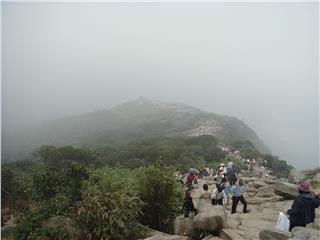
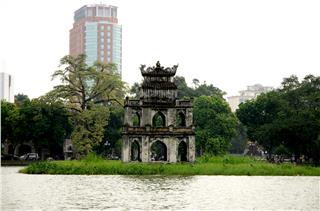
Dong Thai street is 68m long. It stretches from Tran Nhat Duat – Cho Gao crossroad to Ma May street (Hang Buom Ward, Hoan Kiem District). It was formerly the Southern Bank of the To Lich River. In the past, the street bordered on Dong Thai (Ha Khau Ward, Tho Xuong).
Dong Thai street faced Giang Nguyen, Huong Nghia (Ta Tuc canton). Now, Dong Thai communal house is still available at No.06, Dong Thai Street. Under the French domination, it was called Dong Thai lane. Local people often call it Hang Trung lane, different from Hang Trung Street, which is near Hang Man Street. I am walking in the narrowest street among the shortest streets in Hanoi that I know.
The story told by Ms. Bich, a 94-year-old lady, gave me imagination about Dong Thai Street of the old time. Perhaps, there are a few people of her age who still live to witness the change of this street. Egg sellers used to gather in the small and narrow street. There are some old houses in this street. I guess these houses may be hundreds of years old. They have been damaged by time. However, I am impressed most by the traces of time on the old walls. And this window keeps obsessing me. Luckily, it is kept well. These old house will show you part of history and culture of Dong Thai street. I wish I could put these houses in a glass box so that everyone can contemplate them and these precious heritages would not be damaged by weather and time.
The next street in our strip is To Tich which used to be known for the turning craft. From Tran Nhat Duat Street, turn right to Hang Khoai Street, then turn left at the end of this street into Hang Luoc Street. Go straight Cha Ca Street, Hang Ca Street, Luong Van Can Street. Turn right to Hang Quat Street and turn left to To Tich Street. The street is 95m long. It links Hang Quat Street and Hang Gai Street (Hang Gai Ward, Hoan Kiem, Hanoi).
To Tich was formerly a hamlet of Tien Tuc district, then renamed Thuan My, old Tho Xuong district. Under the French domination, it was called “To Tich”. It was expanded after 1920. Originally, the path to To Tich Street from Hang Gai Street was very narrow, earthen and gravelly road. It became muddy on rainy days. “To Tich” means “white mat”. No one knows why it had such name because there is no document or no trace of the craft of mat making here. The dike footing by the river may have been the place for selling mats.
However, this information is not mentioned in “Du dia chi” book by Nguyen Trai about the mat selling ward. To Tich is an ancient street but few old houses still remain in this street. We are told that there is only a turner working in this street now while other people have taken another job.
To my feeling, Thang is a special man. Now people often open shops and offer services to earn their living and get rich. However, this man is determined to keep the traditional craft handed down by the ancestor. He is so industrious and clever. In a narrow space, he is busy with different tools.
Thang can turn wooden furniture that requires high aesthetics. Tea sets, wine decanters, beads, tea cases, ashtrays…made from different kinds of fragrant and rare wood are ordered by many customers. He has followed this job for 20 years. He is afraid that the craft will fall into oblivion one day. Suddenly I feel worried like him. He is the only turner in this street. Will commercial products or art works from turned wood be known by the people? Where will the children buy humming tops? Turners in other places may make products with higher commercial values, while simple, hand-made wood toys are gradually falling into oblivion. Suddenly I feel so sad. I wish there are more people like Thang so that the traditional craft remains and part of our childhood is kept forever.
To Tich Street is also famous for the dish of mixed fruit in condensed milk. In recent years, many mixed fruit shops have been opened here. Passers-by will immediately be attracted by eye-catching colors and fragrance of different types of fruits. This mixed-fruit street seems to become more crowded at weekend. After taking a walk around the old Quarter, passers-by often stop by this street to enjoy delicious glasses of mixed fruit in condensed milk. However, over the change of time, there are now not many mixed fruit shops here. Nowadays, more services have been offered along the streets. We can easily see souvenirs, handicrafts like wooden lotus for worship, wooden fruits used in engagement or wedding ceremonies, brocade cloths, woodcut paintings, stone paintings, wood statues, traditional musical instruments… Due to the variety of products, the street attracts numerous foreign visitors. I come to talk to a seller to get know more about cultural features of To Tich Street.
Everything in her shop is nice and beautiful. The handicrafts here are diverse. Culture of Hanoi in general and of To Tich Street in particular is so rich. I am so impressed by these wooden chopsticks.
Nguyet’s family follows the tradition of making woodcut painting, stone paintings and wood chopsticks. She is proud of being a Hanoian. She got married to a local in the Hanoi Old Quarters, thus she has been taught with the traditional craft of her husband’s family. The local people like Nguyet and Thang are contributing to preserving the cultural identity of Hanoi’s old streets. There are still many stories about culture, history and people in shortest streets in Hanoi. Hanoians are so elegant and profound, from facial expression to action. The Hanoi Old Quarters in general and To Tich Street in particular are really appealing me. Perhaps, the next trip to explore the shortest streets in Hanoi will bring to me more interesting things and surprises.
Source: VTC10 - NETVIET

 Đặt vé máy bay cho người Việt?
Bấm vào đây
Đặt vé máy bay cho người Việt?
Bấm vào đây
Our service uses cookies for technical, analytical and marketing purposes. See our Cookie và Privacy policies for more information. If you agree to this, just keep browsing.


